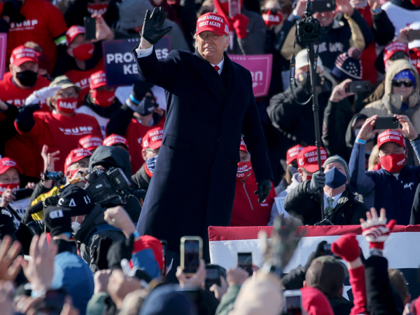Unexpected Drop in Manufacturing Output Points to More Inflation Ahead
Shortgages of chips dragged down production and capacity utilization in June, pointing to more pricing pressure in the months to come

Shortgages of chips dragged down production and capacity utilization in June, pointing to more pricing pressure in the months to come

Manufacturing output rose just 0.4 percent in April, compared with expectations for a 1.8 percent gain, the Federal Reserve said Friday.

U.S. factory orders rose 1.1 percent in March, the Commerce Department said Tuesday. That was below the 1.3 percent increase expected by analysts but above the 0.8 percent contraction amid February’s harsh weather.

Worker shortages, chip shortages, and rising materials costs may be holding back expansion in U.S. factories.

The reopening triggered a surge in factory activity in Texas but high unemployment benefits are making workers scarce.

The Kansas City Fed’s manufacturing survey’s composite index jumped to 31, up from an already elevated 26 in March. That is the best reading in the survey’s history.

Manufacturing activity exploded higher in March, fueled by strong growth in new orders, the clearest sign that the economy was ready to boom prior to the stimulus package passed last month and may now be at risk of overheating.

The economy is accelerating more rapidly than expected.

The Philly Fed’s manufacturing activity index soared to 51.8 in March from 23.1 in the prior month. That’s the best reading since 1973.

U.S. factory orders rose by a sizzling 2.6 percent in January to $509.4 billion, data released by the Commerce Department Thursday showed.

The ISM Manufacturing Report on Business PMI stood at 60.8 in February, up from 58.7 in January. That’s the highest level since August 2018 and indicates a powerful expansion for the manufacturing sector.

Orders for durable goods rose 3.4 percent in January compared with December. The prior month was also revised up to show a 1.2 percent gain from November.

U.S. industrial production rose 0.9 percent in January, data from the Federal Reserve showed Wednesday. Manufacturing output rose by one percent, twice the forecast, despite a decline in auto production.

Orders for consumer goods were particularly strong as 2020 came to a close.

The best reading in nearly two-and-a-half years.

New orders, production, and employment grew in October, signaling a stronger than expected recovery for U.S. factories.

Business conditions are improving faster than expected.

The manufacturing sector continues to recover from the depth of the pandemic shutdowns.

Auto orders surged. Core capital goods rose strongly. But aircraft orders plunged as airlines canceled orders amid plunging booking.

Another reason why our future depends on a revival of American manufacturing.

Most major industries posted increases, the Fed said, with the largest gain registered by motor vehicles and parts.

Orders for goods made in U.S. factories saw the biggest decline ever recorded in data going back to 1992.

More evidence that the worst of the shutdown’s economic impact is behind us.

Orders for core capital goods dropped in April but the decline was much smaller than most economists had forecast.

The company sent workers home from two plants Wednesday after workers were discovered to have teste positive for coronavirus.

Auto production fell 70 percent. Business equipment manufacturing fell 17.3 percent.

Factories closed, orders plunged, supply chains were disrupted, and workers lost their jobs.

Factory production and employment fell in March as the coronavirus shutdown major parts of the economy.

Wages increased and business remain optimistic but overall activity contracted in February, the Richmond Fed said.

Days after the New York Fed’s survey pointed to a strengthening manufacturing sector, the Philly Fed survey rose to one of the best readings in years.

For the second month in a row, the survey of manufacturing businesses in New York came in better than expected.

Boeing’s suspended 737 Max was a drag on factory activity and mild weather pulled down utility production in January.

Although manufacturing grew, overall industrial output slumped on lower utilities output thanks to nicer weather.

Another bullish sign for the economy: manufacturing appears to be regaining its footing and expanding once more.

New orders and shipments improved but a rising share of manufacturers say general conditions are negative.

Capital spending and technology spending plans rose in December, suggesting strength ahead for manufacturing

The latest sign that the U.S. manufacturing sector may be stabilizing after a tough couple of months.

Business investment rebounded, easing fears that the manufacturing sector would continue to slowdown into year end.

Amazon.com, Inc. — owned by billionaire Jeff Bezos — is selling items manufactured in foreign factories with dangerous working conditions and where workers are treated as slave labor, a new report alleges.

Overall industrial production declined in September following strong growth in August, driven down by the GM strike and cheap energy.
